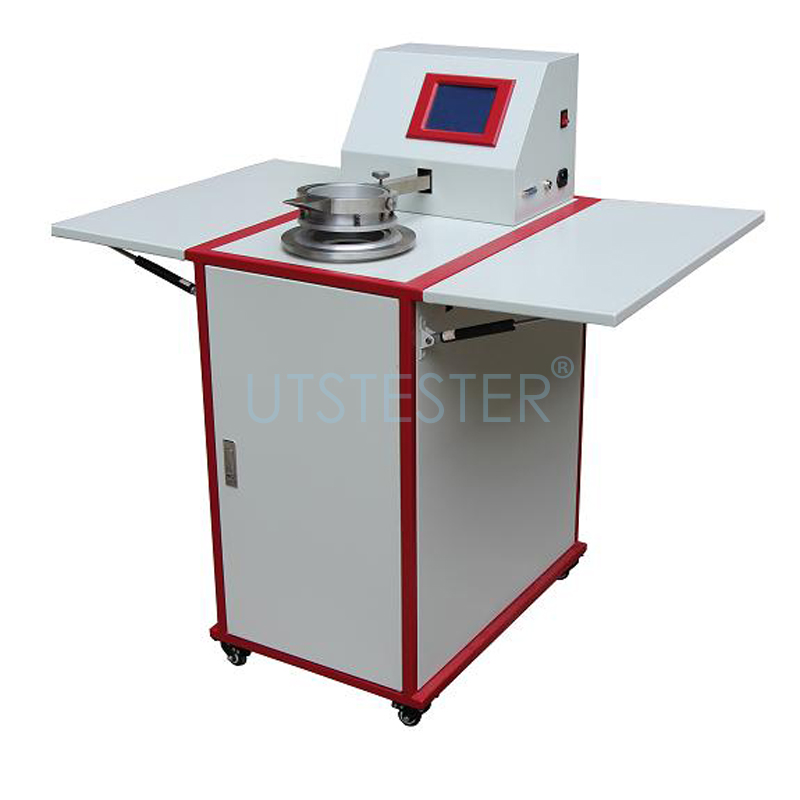 +86 152 6060 5085
+86 152 6060 5085
 +86 152 6060 5085
+86 152 6060 5085
Blog
Catalog
Introduction of air permeability test standards
The air permeability of textiles is one of the important factors affecting the properties of fabrics.The comfortable performance of fabric for use and decoration has a great relationship with the air permeability of fabric.Some industrial fabrics, such as aircraft parachutes, press cloth and airbag fabrics, must also comply with certain air permeability requirements in order to work better.
At present, overseas air permeability detection methods mainly include:
ISO 9237-1995(mainly used in textile fabrics, industrial fabrics and nonwovens);ISO 7229-1997(mainly for rubber or plastic coated fabrics);ASTM d737-2004 (2012)(mainly used in textile fabrics);BS 5636-1978(mainly used in textile fabrics);JIS l1096-1999 (mainly used in textiles).Two standard methods, ISO 9237 and ASTM D737, are the most widely used.
GB/T 5453-1997(equivalent to ISO 9237-1995) is a widely used standard for the determination of air permeability of fabrics in China. This standard is applicable to many kinds of textile fabrics, including industrial fabrics, non-fabric fabrics and other breathable textile products.In the test, different pressure drops were used to make a fine distinction between the fabric for wearing and the fabric for industrial use. The pressure drop of the fabric for wearing was 100Pa, while the pressure drop of the fabric for industrial use was 200Pa.GB/T 5453-1985 "born fabric air permeability test method" to breathe freely amount (refers to the pressure difference between the two sides in fabric, the volume of air per unit area per unit time through the fabric) measure of fabric permeability revised standard GB/T 5453-1997 by ventilation rate (refers to the provisions of the sample area, pressure drop and time conditions, the vertical airflow through the sample rate) said the permeability of fabric.
However, ASTM D737 differs from the above two standards in application scope, temperature and humidity, test area, pressure difference and other aspects.Considering the actual situation of import and export textile trade, it is proposed to compare and discuss the specific temperature and humidity, test area, pressure difference and other conditions of ISO 9237 and ASTM D737 with different samples, so as to select the most applicable and representative conditions and establish the industry standard suitable for import and export trade.
2. Comparison of air permeability test standards
At present, the commonly used air permeability test standards mainly include ASTM d737-2012 "test method for textile air permeability", ISO 9237-1995 "determination of air permeability of textile fabrics", GB/T 5453-1997 "determination of air permeability of textile fabrics" and JIS l1096-1999 "test method for textile air permeability".Among them, GB/T 5453-1997 is equivalent to ISO 9237-1995.JIS l1096-1999 was divided into method A and method B. Method A adopted the Frazir breathability tester with the pressure difference of 125Pa, which was measured and averaged for 5 times.The Gurley breathability tester was used to measure the time of 300ml air passing through the fabric under a specific pressure difference, and the breathability rate was expressed in seconds. This method is applicable to wool fabrics.Because JIS L1096 requires the use of specific instruments, it is not commonly used in daily testing and is not considered in the following conditions.
For import and export trade, the sampling representativeness is crucial, therefore internal system of textile and apparel sampling are formulated the industry standard, in order to better adapt to the specific situation of the import and export of textiles, the principle of sampling reference SN/T 3702 the import and export of textile quality conformity assessment sampling method, the standard includes seven parts:
Part 1: general principles;
Part 2: textile materials;
Part 3: textile yarn;
Part 4: textile fabrics;
Part 5: textile products;
Part 6: clothing;
Part 7: special textiles.
It can meet a variety of requirements and is more specific and comprehensive than ASTM d737-2012 and ISO 9237-1995.
In terms of sampling, ISO 9237-1995 is relatively general and only means that test sites are randomly selected.ASTM d737-2012 specifies but specifically specifies sample cutting.From the need of permeability test itself and customer cost requirements, it is more appropriate to conduct non-destructive testing, there is no need to cut the sample.

Air permeability testing equipment
M027A Digital Air Permeability Tester was mainly used for testing the Air Permeability of general woven fabrics, knitted fabrics, special industrial fabrics and nonwoven fabrics. It could also be used for testing the Air Permeability of non-woven materials like Air filter core paper, industrial filter paper, laminated materials and other sheet materials in the paper making industry.The principle of the test is: the breathable property of the fabric is obtained by measuring the air quantity of the fabric per unit time under certain pressure difference.The breathable property of fabric is obtained by measuring the air quantity of fabric per unit time under certain pressure difference.The higher the air permeability is, the better the air permeability is.In the case of equal air permeability, the greater the pressure difference between the two ends of the fabric, the worse the air permeability of the fabric.
According to the situation of textile testing, all the above instruments and equipment can meet the current requirements of air permeability testing, and there is no significant difference between the test results of different equipment. Therefore, there is no need to specify specific requirements for the instrument in the standard. As long as the standard conditions can be met, the air permeability testing can be carried out.
Email: hello@utstesters.com
Direct: + 86 152 6060 5085
Tel: +86-596-7686689
Web: www.utstesters.com